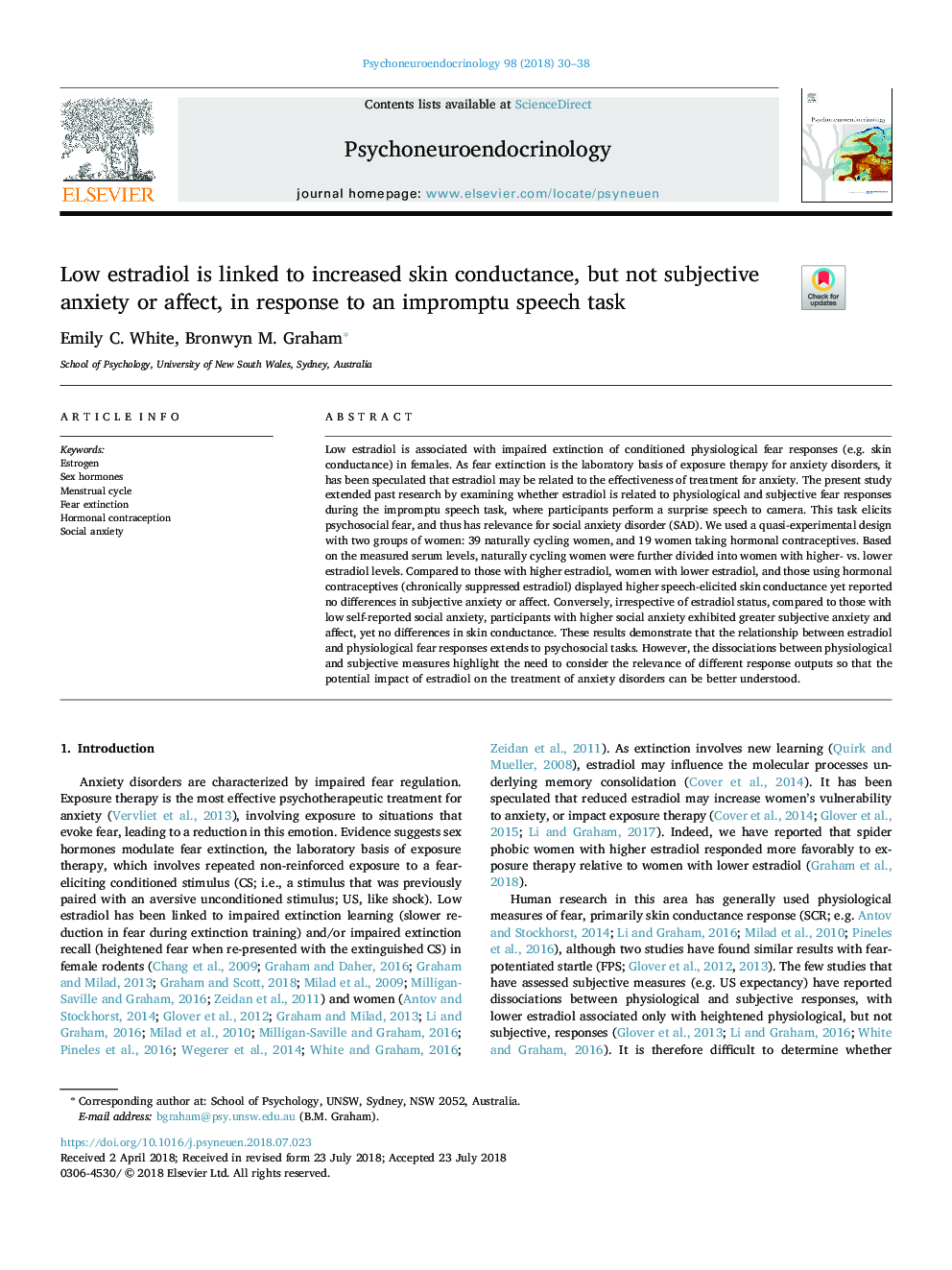| Article ID | Journal | Published Year | Pages | File Type |
|---|---|---|---|---|
| 6817415 | Psychoneuroendocrinology | 2018 | 9 Pages |
Abstract
Low estradiol is associated with impaired extinction of conditioned physiological fear responses (e.g. skin conductance) in females. As fear extinction is the laboratory basis of exposure therapy for anxiety disorders, it has been speculated that estradiol may be related to the effectiveness of treatment for anxiety. The present study extended past research by examining whether estradiol is related to physiological and subjective fear responses during the impromptu speech task, where participants perform a surprise speech to camera. This task elicits psychosocial fear, and thus has relevance for social anxiety disorder (SAD). We used a quasi-experimental design with two groups of women: 39 naturally cycling women, and 19 women taking hormonal contraceptives. Based on the measured serum levels, naturally cycling women were further divided into women with higher- vs. lower estradiol levels. Compared to those with higher estradiol, women with lower estradiol, and those using hormonal contraceptives (chronically suppressed estradiol) displayed higher speech-elicited skin conductance yet reported no differences in subjective anxiety or affect. Conversely, irrespective of estradiol status, compared to those with low self-reported social anxiety, participants with higher social anxiety exhibited greater subjective anxiety and affect, yet no differences in skin conductance. These results demonstrate that the relationship between estradiol and physiological fear responses extends to psychosocial tasks. However, the dissociations between physiological and subjective measures highlight the need to consider the relevance of different response outputs so that the potential impact of estradiol on the treatment of anxiety disorders can be better understood.
Related Topics
Life Sciences
Biochemistry, Genetics and Molecular Biology
Endocrinology
Authors
Emily C. White, Bronwyn M. Graham,
